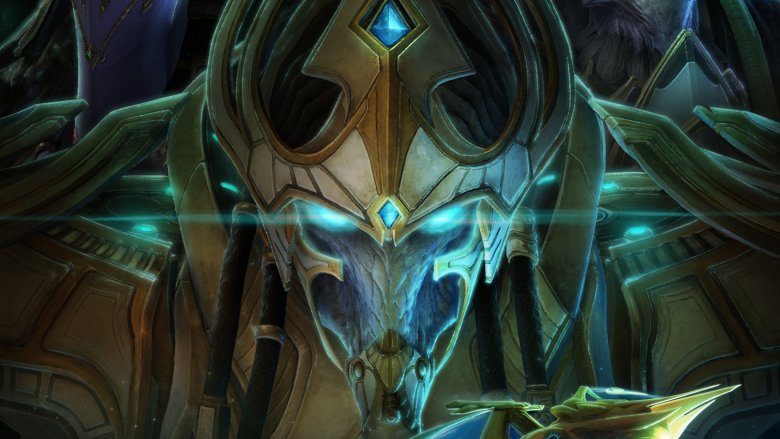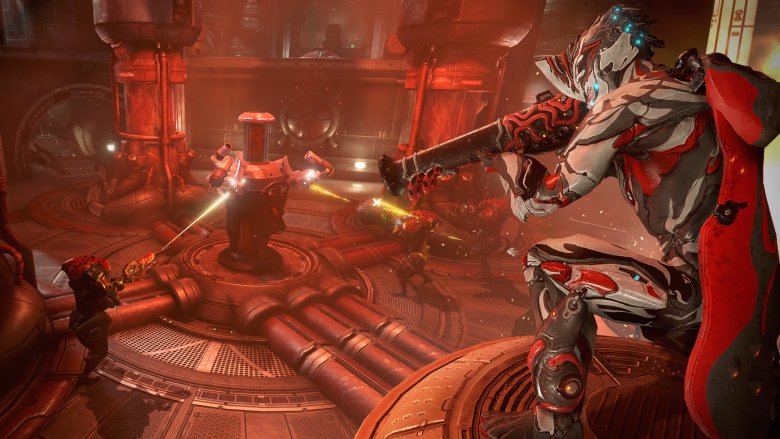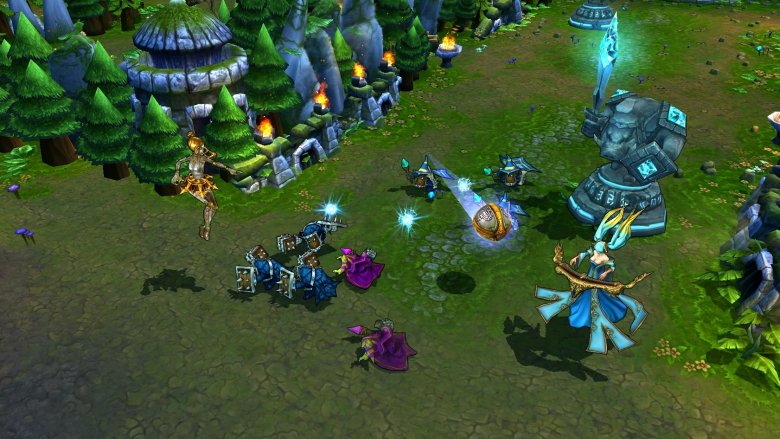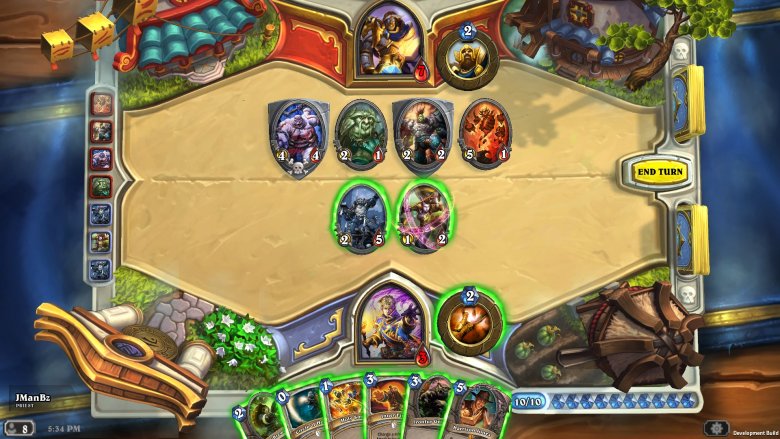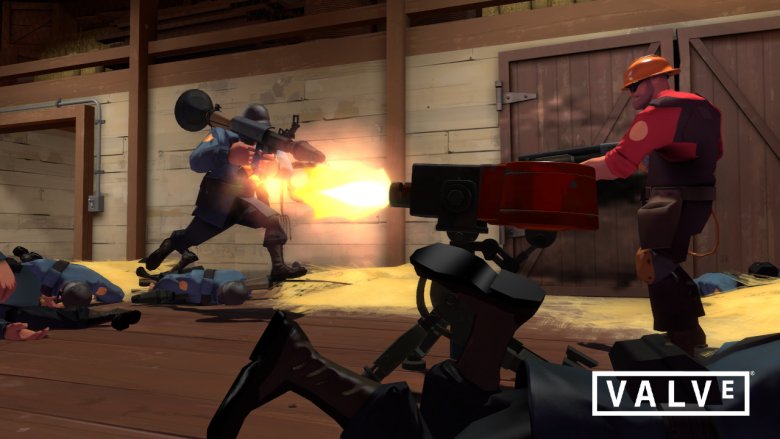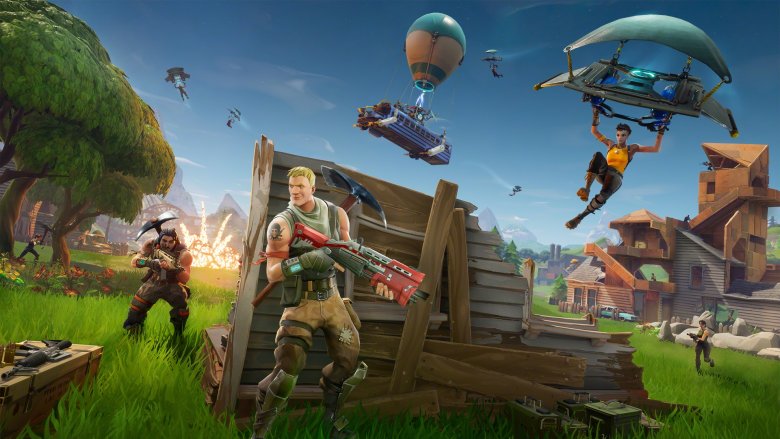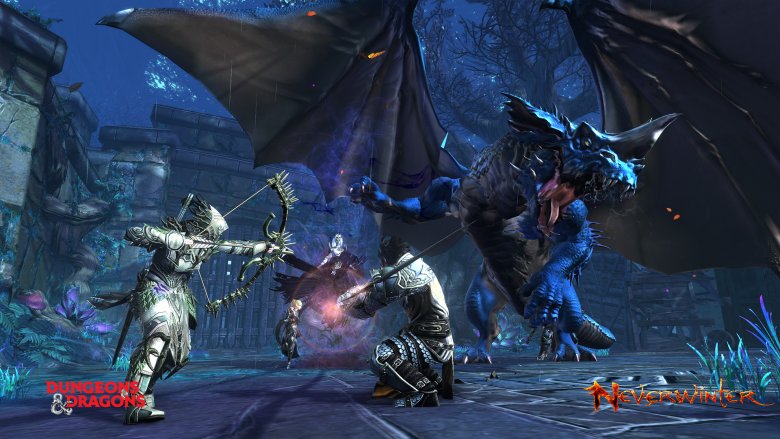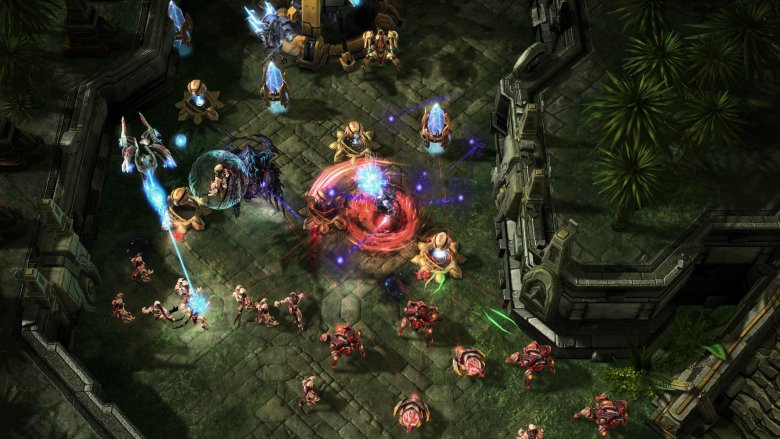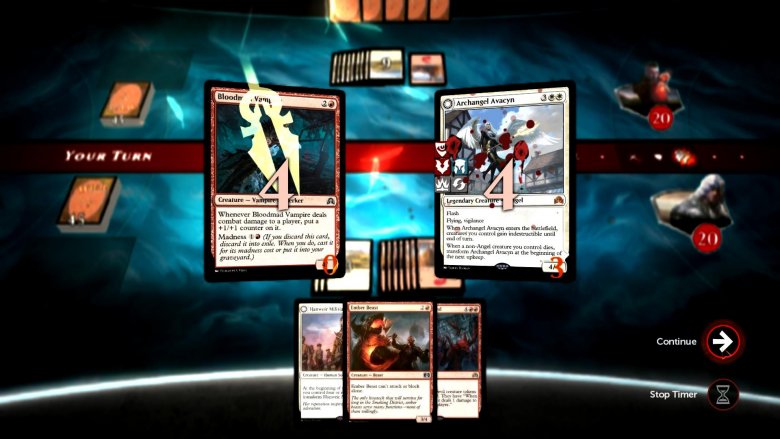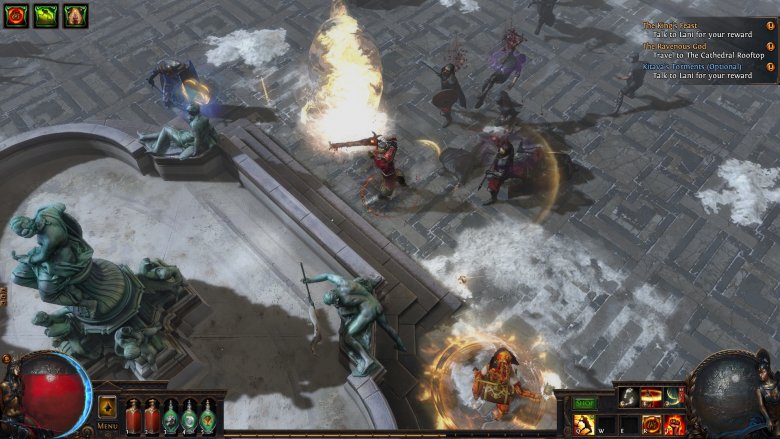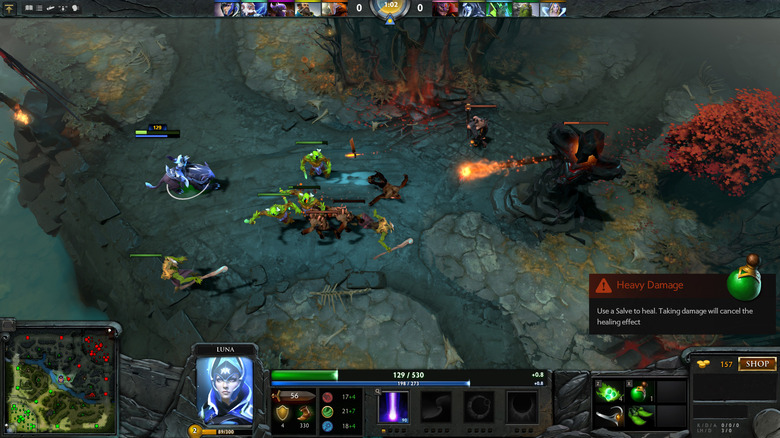The Best Free PC Games You Need To Play Right Now
The point of most games is to make money for the people who made them. Originally, the industry did what every other business does: it sold packaged products for fixed prices. And for decades, this worked! Money was made, the industry grew, and games flourished.
But a few recent trends have rocked the boat a bit. First, the digital revolution came along, which allowed gamers to buy a game online and then download it directly: no physical packaging or retail stores required. This led to the concept of downloadable content, or DLC: paid content expansions that were never sold physically, but extended games' revenue streams.
Combining these two ideas–an all-digital product with paid content additions–produced another, more profitable idea: free. Ever since the first pioneers of this business strategy got started, free has made certain games more money than they know what to do with. How is that possible? Because while the game itself may be free, much of the content within it must be paid for. From characters to gear to cosmetic upgrades, players could spend however much they wanted to get more stuff, often spending more than the game would have cost if it were a paid product.
This new free approach has produced some fantastic games that are worth your time. Some are classic titles reborn, while others go toe-to-toe with bigger-budget AAA rivals...and one is the biggest game in the world. These are the best free PC games you need to play right now.
Warframe
Warframe is a third-person action-shooter from Digital Extremes, set against a space opera backdrop within our solar system. The core gameplay loop involves running missions for resources, level up, and progress to other planets. It's a hybrid of Diablo and Destiny, all for free.
What makes Waframe stand out is just how much content there is. There are well over a dozen planets, each with over a dozen missions; all of these are repeatable, and since the levels themselves are procedurally generated, they're different every time. On top of that, there are a huge number of narrative missions and quests that feature unique objectives and levels. On top of that, there are a dizzying array of factions and clans to join or even start for yourself, which unlock new activities and gear of their own. And on top of that, the latest expansion, Plains of Eidolon, introduced the game's first open-world space–which included brand-new systems and activities to explore.
Moment-to-moment, players will be shooting with a huge variety of guns that all perform differently. Ditto for hacking at enemies with a dizzying array of melee weapons. Plus, each suit of armor, or Warframe, features a unique set of abilities. These aren't the same items with different skins, these are substantively different gameplay mechanics.
As for the money, a player will only really need to pay for two things: aesthetic options, and reduced grind. All in all, that makes Waframe an astounding bargain for no money down.
League of Legends
It doesn't get any bigger than the world's biggest game: Riot Games' League of Legends. A multiplayer online battle arena (MOBA) inspired by the classic Warcraft III mod Defense of the Ancients, League of Legends lets players choose from a vast array of champions. Two teams of five battle, trying to destroy the enemy's base while also leveling up their character. The granular balance between offense and defense, damage and healing, tactical precision and long-term strategy elevated the game's popularity above its rivals, many of which are quite good (and feature later on this list).
Granted, for first-time players, League of Legends is notoriously difficult to get into. A key component of the game involves purchasing items to upgrade your character mid-battle, but the list of items is enormous. Learning the game's ins and outs is a job unto itself: certain champions pair well with, or against, others, while the next patch will probably change it all again. Then there's the famously toxic community, which tends to shred other players with insults.
But stick with the game, ignore the jerks, and what's left is a superbly refined MOBA with gorgeous art design and a global community. Plus, League of Legends has one of the biggest eSports scenes ever, complete with its own tournaments and celebrity players. It's not just a game: it's a cultural phenomenon you can join, free of charge.
Of course, if you find a champion that you like to play as, you must unlock that character for future use. You can grind to get the necessary in-game currency for hours and hours... or just pay real-world money.
Hearthstone
Blizzard Entertainment is famous for blockbuster games, from Diablo to StarCraft to World of Warcraft. But in 2014, the studio released a stealth project that nobody had even realized they were working on: a card game called Hearthstone. A fully digital reimagining of the popular Collectible Card Game genre, Hearthstone allowed players to pick a class with unique abilities and cards, and then assemble a deck of spells and monsters to battle another player. And unlike any Blizzard game before it, it was free.
The all-digital format let Blizzard experiment. Randomized card effects, impossible in a physical game, appeared in Hearthstone. Specific minion placement became important, since many abilities would have effects on adjacent characters. Plus, the audio-visual actualization of spells and attacks brought the whole experience to life in a way that could engage viewers, even if they didn't know the game.
Hearthstone exceeded even Blizzard's expectations, garnering over 70 million players and a thriving eSports scene. Continued content updates have kept the meta fresh, and a variety of different modes–competitive multiplayer, single-player campaigns–gives everyone a little something to do. And while you can play on PC, it's also available on mobile. Your Battle.net account will carry over to any device, so your decks will be waiting for you no matter what you play on.
So what actually costs money? Card packs are only earned slowly through gameplay, so you'll need to fork over cash to pick them up faster. And some content expansions, such as single-player adventures, must be purchased separately. But there's plenty there for you even if you never spend a dime.
Team Fortress 2
Valve's Team Fortress 2 is a multiplayer hero shooter with a cartoonish and colorful art style. Players pick from a small range of diverse heroes, but that's the last "small" thing about the game. An enormous number of weapons, maps, and modes await gamers–and that isn't even mentioning the massive amount of aesthetic items available for customization. How did Valve create all of this content? Short answer: they didn't! Or rather, Valve created the core set of maps, characters, and weapons, but much of the rest has been cooked up by the community itself. Valve has shown an unusual amount of support for the modding crowd, and they've reaped the rewards with their incredible content library.
While the core experience features two teams shooting at each other, there are many variations: Capture the Flag, King of the Hill, Payload, and more. A co-op experience against AI enemies was introduced a few years ago. Meanwhile, each hero can be equipped with different weapons, providing variety while still maintaining the class' identity. And with ten years of patches and updates behind it, the game still feels precision-balanced.
While many aesthetic items are for purchase with real money, and certain in-game weapons can be acquired faster, there is a gigantic game ready to play on day one without reaching for your credit card.
Unless you want hats. Then you have to pay. That's how Valve gets you.
Fortnite: Battle Royale
After a decade of dark, dirty warfare against hideous bug creatures in the Gears of War franchise, Epic Games decided to switch gears and do something fun, colorful, and family-friendly. The result was Fortnite, a co-op hybrid of the third-person shooter, survival, and tower defense genres. Players scavenge a post-apocalyptic landscape for parts, then return to their fort to construct massive walls and deadly traps. Waves of AI enemies assault their defenses, and players hope their architectual ingenuity paid off.
Fortnite looks beautiful and drips with personality, setting it apart from the competition. In its collect-and-build mentality, it mirrors Minecraft in some respects. Even still: this unique blend of elements makes for a fresh experience, even if you've seen all the pieces before.
But that's all for purchase as a paid product. Fortnite's true breakout didn't come until it absorbed yet another genre into itself: namely, the battle royale genre popularized by Playerunknown's Battlegrounds. Fortnite: Battle Royale skyrocketed on release, racking up millions of players and over half a million concurrent players, a massive milestone by any metric. Partly, this proves the popularity of the battle royale format. But it also shows the true power of free. Where the original Fortnite remains a paid product, Battle Royale is free for anyone to download.
There's a store for cosmetic items bought with in-game currency, which you can grind for in the game or just purchase for real money. But so far, all the game mechanics are entirely gratis.
Neverwinter
It's a common life-cycle for MMOs: start as a subscription service, watch player count dwindle after a few months, then announce the game is free-to-play. But Cryptic Studios' Neverwinter skipped straight to the end, designed from the ground up to be free on day one. Based on the Forgotten Realms story within the Dungeons and Dragons multiverse, Neverwinter is a more beginner-friendly experience, emphasizing action over inventory management. Story and voice-acting are high-quality, particularly for a genre that doesn't often bother with either.
First released in 2013, Neverwinter has been actively developed since then with both content drops and full-fledged expansions. Many of these take players to cities and areas that have never been visually expressed before, so players familiar with the Forgotten Realms setting can visit these places for the first time. And if the huge open-world spaces and bespoke dungeons weren't enough, Cryptic Studios was wise enough to let players do what D&D players should do: create their own adventures. Any player can custom-design their own quest, dungeon, or even campaign, and then release it for others to play.
The entire game, from beginning to end, is available for free; for monetization, it's just a question of how much you want to reduce the grind. While the leveling system is considered fair by most players, you'll spend a lot more time if you're don't spend your money. Still, in a gorgeous world with compelling stories, maybe time is what you want to spend anyway.
StarCraft II
Blizzard's strategy epic StarCraft II is extremely demanding: it requires a deep knowledge of dozens of units across three different factions, precision micromanagement, and grasp of both short- and long-term decision-making. While this complexity served it well in the professional circuit, where StarCraft II is a top-tier eSport, it has made the game intimidating for first-time players.
In a bid to lure in wary gamers, Blizzard has now made StarCraft II free-to-play. Now, StarCraft II isn't a normal game: it actually consists of three parts. There's the original title, Wings of Liberty, followed by two expansions, Heart of the Swarm and Legacy of the Void. Each of those expansions could be a full game in their own right They add new units to the multiplayer, as well as complete, enormous single-player campaigns. Plus, there's the co-op Commanders mod and the Nova Covert Ops, which are quick single-player missions.
So what went free, and what's still paid? On the single-player side, the original Wings of Liberty campaign is free. This is considered one of the finest real-time strategy campaigns ever created, with a huge diversity of missions. The expansion campaigns, and the Nova Covert Ops, must still be purchased separately. For the multiplayer, the competitive ladder, including all units from all expansions, is free (though you must first win some unranked games to unlock ranked play). For the co-op, all the Commanders (the heroes that you play as) are free up to Level 5; past that level, and you'll have to start paying.
For a AAA strategy title from one of the world's best game studios, that's a pretty great deal for no money at all.
Magic Duels
Magic: The Gathering, the original Collectible Card Game, remains popular over twenty years after its release. Recently, the game has made a successful move into the digital space with its current offering: Magic Duels. While the basic rules in Duels are identical to the physical card game, the total set of cards is limited. But by "limited," that still means there are over 1,300 cards to choose from. Even a stripped-down version of Magic is massive.
Players in Duels can use pre-built decks or create their own, exactly like in the physical game (though deck construction rules are altered slightly). The cards themselves represent different spells, which might deal damage, summon creatures, destroy enemy cards, or any of a variety of other possibilities. Players can go head-to-head or two-versus-two to compete for in-game currency, which can be used to purchase either booster packs of random cards, or specific individual cards. Plus, Duels features a robust single-player campaign: five of them, actually, one for each major character.
All of this is free. For monetization, the game allows players to purchase in-game currency. But since you also earn that currency by playing the game anyway, Magic Duels is a really great offer. One of the best card games ever made, for free? That's a lot of bang for no bucks.
Path of Exile
Grinding Gear Games' Path of Exile is an action-RPG in which players take the role of heroes with a diverse array of powerful attacks and spells, who venture forth from central hub locations to battle monsters and demons from a top-down perspective in order to gain loot. Did that sound like Diablo? Let's be real: Path of Exile is a lot like Diablo. However, the central hubs are multiplayer, which makes it easier to find, partner, and trade with other gamers. And also, it's free.
Grinding Gear has made sure to add major content to the game once or twice a year, making Path of Exile an evolving and growing experience. All that content is free, too. What's more, players can choose which areas to run, and at what difficulty, at will. Levels are procedurally generated, so missions never go exactly the same way twice. And while there are different classes, the sheer number of combinations of abilities and modifiers allows every player to customize their own specific hero-type.
The only microtransactions are for cosmetic items and for inventory space. And yes–as a loot game, inventory space is going to be pretty critical. But that's still up to you in an experience that otherwise won't take a penny from you.
Dota 2
Valve surprised everyone when it announced that it was hiring IceFrog, the developer of the famous Warcraft III mod Defense of the Ancients. Since then, Valve has released the unofficial sequel to the mod, called Dota 2, as a full product in its own right. One of the most densely-complicated games ever made, Dota 2 lets players choose from any of hundreds of heroes, each with unique abilities, weaknesses, and strengths. Two teams of five square off against each other, attempting to take down the others' base. And as the heroes level up and unlock new abilities throughout the match, players can purchase items to enhance their abilities.
Even more so than League of Legends, the sheer depth and complexity of the item list, and the items' near-infinite combinations, provide Dota 2 with enough factors to prevent anyone from ever attaining true mastery over the game. That's propelled Dota 2 into one of the world's biggest eSports; with Valve's financial backing, its tournaments have the highest prize pools in eSports history. Of all MOBAs available today, Dota 2 is considered the most hardcore, difficult, and–for some–rewarding.
Unlike its rivals, Dota 2 keeps all heroes absolutely free: the only microtransactions in the whole game are for cosmetic upgrades. That was a bold move on Valve's part, but given the enormous amount of time players invest into the game, enough people are paying for cosmetics to make Dota 2 a thriving business. For free.

